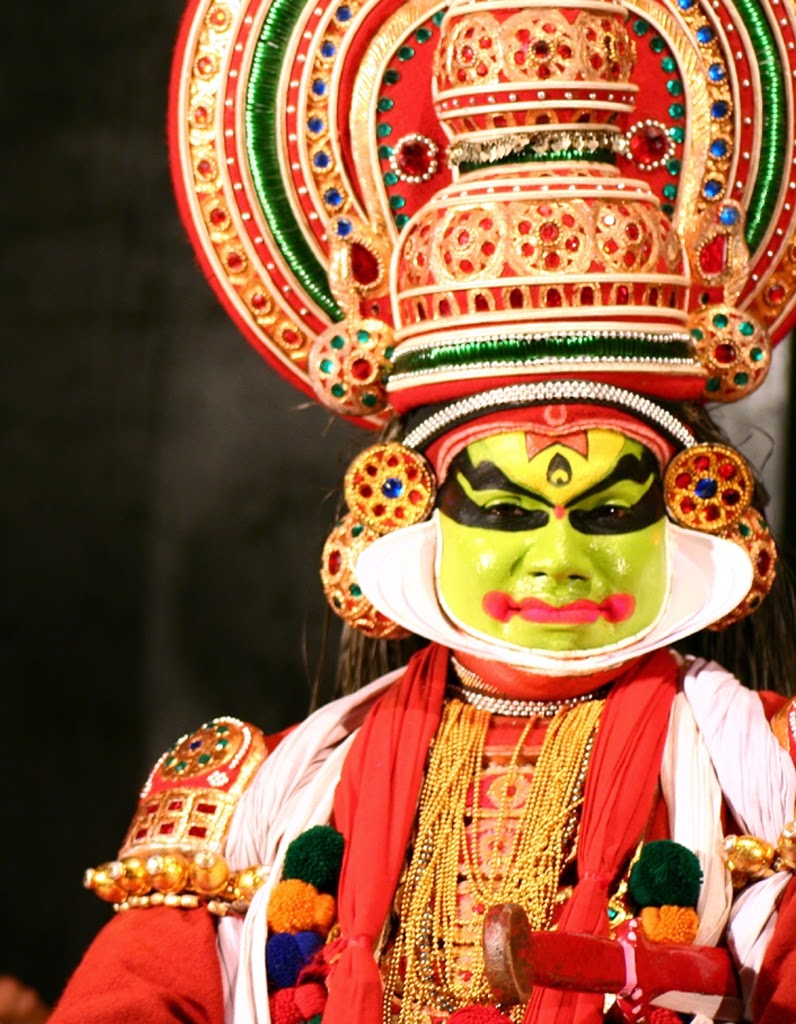Kathakali Dance of Kerala is the traditional dance drama of Kerala with very colorful characters depicting a story with Kathak hand gestures. 'Kathakali' literally translates into "Story Play" and is one of the world's most famous form of dancing in which a story is being told in the form of a dance.Kathakali is an ancient and traditional dance form of Kerala. The word Kathakali literally means "Story-Play". Kathakali uses elaborate make-ups, costumes and background. Kathakali was originated in the 17th century and has its roots in Hindu mythology.
Origin and History of Kathakali
Popular belief is that Kathakali is emerged from "Krishananattam", the dance drama on the life and activities of Lord Krishna created by the Zamorin of Calicut. Once Kottarakkara Thampuran, the Raja of Kottarakkara who was attracted by Krishnanaattam requested the Zamorin for the loan of a troupe of performers. Due to the political rivalry between the two, Zamorin did not allow this. So Kottarakkara Thampuran created another art form called Ramanattam which was later transformed into Aattakatha. Krishnanaattam was written in Sanskrit, and Raamanaattam was in Malayalam. By the end of 17th century, Attakatha was presented to the world with the title 'Kathakali'.
Kathakali is thought to have originated from pioneer dance-drama forms - Ramanattam and Krishnanattam. The word "attam" means enactment. These two forms of dance, along with Kathakali, dealt with presentation of the stories of Hindu Gods Rama and Krishna. Kottarakara Thampuran, the ruler of the south Kerala province of Kottarakkara, composed several plays on the Ramayana, which led to the evolution of Kathakali.It originated in the 16th century AD, approximately between 1555 and 1605, and has been improved miraculously over the years.
The dancers wear large head dresses, and the contours of the face are extended with moulded lime. The extraordinary costumes and make-up serve to raise the participants above the level of mere mortals, so that they may transport the audience to a world of wonders.

No comments:
Post a Comment